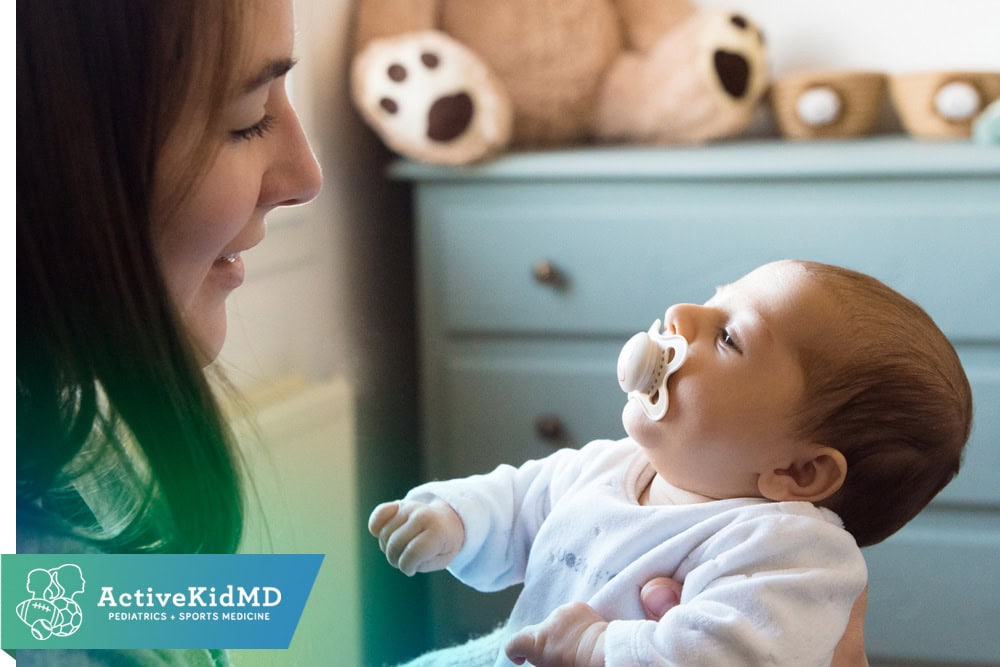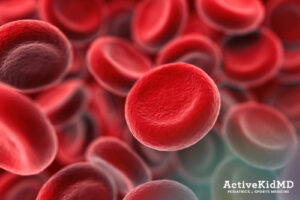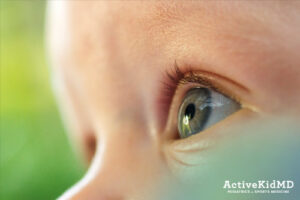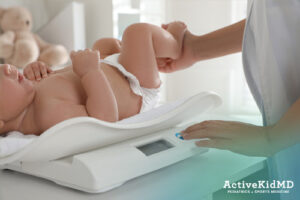Almost all newborns will have yellow eyes at some point. But why does this happen, and when should you be concerned?
The following are the two most common reasons for yellow eyes in newborns and the warning signs that mean it’s time to call your baby’s medical team.
Related topic: Why Yellow is the Most Important Color in Newborns
Related video: Watch Here
1. Yellow Discharge: Blocked Tear Ducts
Yellow discharge from your newborn’s eyes is often normal and can be caused by blocked tear ducts.
- This is most common in the first few weeks of life.
- No redness should appear in the white of the eyes.
- If yellow discharge is accompanied by redness, it could indicate an eye infection that needs medical attention.
Helpful Care Tips:
- Gently massage the corner of the eye.
- Apply a warm compress or towel to help open the tear duct.
Blocked tear ducts and their yellow discharge are usually resolved by 6 months of age. If the discharge persists after that, consult your baby’s medical team.
 2. Yellow in the Whites of the Eyes: Newborn Jaundice
2. Yellow in the Whites of the Eyes: Newborn Jaundice
When the whites of your baby’s eyes look yellow, it’s usually due to jaundice, a common condition in newborns.
Here’s what happens:
- Babies are born with extra red blood cells.
- In the first 1–2 weeks of life, many red cells are sent to the liver to be processed as a breakdown product called bilirubin (which is yellow).
- Bilirubin leaves the body through the gut, which is why newborn poop is yellow.
- While bilirubin waits to be cleared, it can be stored in the skin and eyes, causing jaundice.
Progression of Jaundice:
- Yellow color starts in the eyes.
- It spreads to the skin, starting on the face and moving downward.
- Yellow poop appears as bilirubin is excreted.
 When Yellow Eyes Are a Concern
When Yellow Eyes Are a Concern
Some jaundice is expected, but too much yellow can be dangerous:
- Yellowing that reaches the lower rib cage or belly button area is more concerning.
-
Too much bilirubin in the body can:
- Enter the brain and cause short- and long-term damage.
- Make babies sleepier or more alert and harder to calm.
- Make waking and feeding more difficult, leading to less yellow poop and even greater amounts of jaundice and bilirubin levels.
 To Reduce the Risk of Problems with Newborn Jaundice:
To Reduce the Risk of Problems with Newborn Jaundice:
- Babies should be monitored for high bilirubin levels in the first week after birth.
- Jaundice levels usually peak at 72–120 hours (3–5 days) after birth. It is routine that all babies should be seen during this time with checks of weight, feeding status, level of activity, and bilirubin levels as needed.
- Virtually all babies lose weight in the first 3-5 days of life- babies who have excessive weight loss are at higher risk for jaundice issues.
- Babies who are born early (before 37 weeks), have a family history of jaundice, or are breastfed can potentially have higher bilirubin levels.
When to Call Your Doctor
If you notice increasing yellowing of the skin, yellowing near the belly button, or changes in your baby’s feeding or alertness, call your pediatrician right away.
At ActiveKidMD, we are here to support newborns and new parents with:
- Same-day and same-week appointments
- Comprehensive newborn care including monitoring of yellow eyes


 2. Yellow in the Whites of the Eyes: Newborn Jaundice
2. Yellow in the Whites of the Eyes: Newborn Jaundice When Yellow Eyes Are a Concern
When Yellow Eyes Are a Concern To Reduce the Risk of Problems with Newborn Jaundice:
To Reduce the Risk of Problems with Newborn Jaundice: